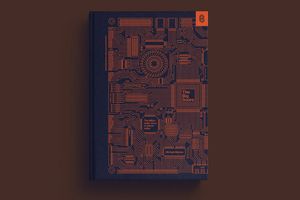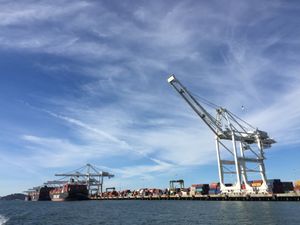A conversation with Michael S. Malone on the history of Silicon Valley.
In 1985, Charlie Sporck, then president of National Semiconductor, sat down with Michael Malone and shared his concerns about the future of his industry:
What’s frightening to me is that if we don’t do something about the long-term plight of the high-technology industry we aren’t going to have any. And if we don’t have any, we will not have a strong industrial base. You can’t have one without the other. If we don’t have a strong industrial base our society is going to change because we will become an underdeveloped country.
Sporck was responding to changes in the technology industry, as semiconductor production in Japan was beginning to overtake American domestic production. This interview comes from Michael Malone’s book, The Big Score: The Billion Dollar Story of Silicon Valley, which traces the technological and organizational history of Silicon Valley, delving into the chip fab processes and corporate espionage that shaped this unique technology hub. Originally published in 1985, the book was written just as software was beginning to emerge as a major market. Executives like Sporck couldn’t fathom the deindustrial high-technology future of software development that lay right around the corner.
Scope of Work's Members’ reading group just finished The Big Score, and invited author Michael S. Malone to discuss the book and the shift from hardware to software in Silicon Valley. Michael is one of the world's best-known high technology business journalists, and the author or co-author of nearly thirty books, including the award-winning titles Bill and Dave, The Intel Trinity, and The Virtual Corporation. He has been the host or producer of several public television series, editor of Forbes ASAP magazine, and Dean's Executive Professor at Santa Clara University.
Michael joined us virtually from his office in Silicon Valley's oldest home. Below is an excerpt from our conversation, in which Michael Malone recounted Apple's ascendency and how the infrastructure of Silicon Valley built the world's dominant technology community.
The turning point from hardware to software, and I really believe we can actually put a date and time on it, was a cool misty January day in 1984 when Steve Jobs introduced the Mac. It was that famous moment when he took the satin sheet off the first Mac, and it says, "Hello." Everyone looked at that Macintosh and said, "God, I wanna get one, it's so cute." But when they looked closer they said, “What, it's only 128 k? And I love the bit-mapping display, it's so sharp and neat, but what the hell am I gonna use it for?"
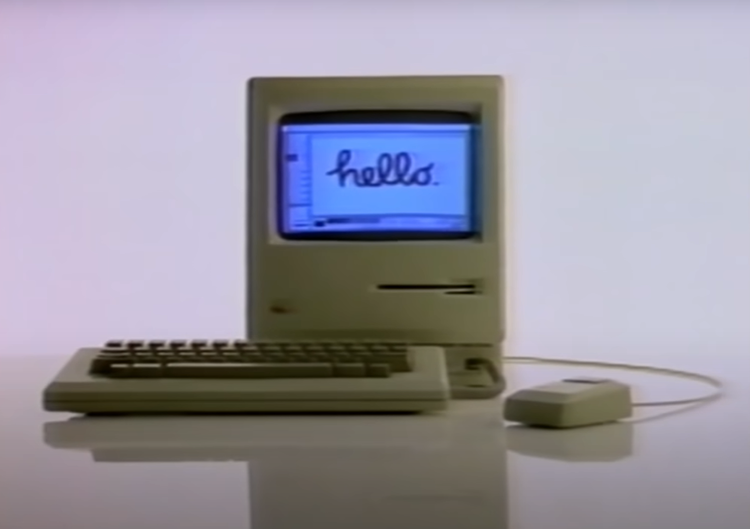
That was a problem for several months - what to do with your Macintosh. Then along came Adobe and a number of other companies that began to develop software. Word processing and VisiCalc were the first real apps, and suddenly you now could justify buying that computer because you could actually do something with it. People began to realize for the first time that software mattered; it wasn't just something you bought to do a particular task. Software was going to define your lifestyle, and the Macintosh was going to convey the fact that you were cool and hip.
Remember that Silicon Valley is essentially the tech industry. If you know your chips, then you think of it as arising in the '50s. If you're just a personal computer person, it arises in the '80s. But Silicon Valley really begins in 1900 with vacuum tube technology that gives rise to the amplifier, radio, and microwaves. It took the next 30-40 years to spin out all the implications of the vacuum tube. Then right before World War II, there was a demonstration at Bell Labs, looking at this thing called a semiconductor - a sheet of silicon that was doped with different atoms. If you put electricity in one direction, it was an insulator, if you went the other direction, it was a conductor. After World War II, Bell Labs brings in William Shockley, a genius and an impossibly difficult human being, who gave the other scientists ideas to make the semiconductor technology practical, and they came up with a transistor.
World War II saw the rise of the very first computers, mechanical ones using tubes. Tubes were fast for the world then: you could compute an artillery trajectory in a matter of minutes. If you did it on paper with an adding machine, it would take a week or two weeks. So you end up with these cool big tube-driven computers like ENIAC, the size of a warehouse. As the myth goes, you had men in bathing suits inside the computer running around because a tube would burn out about every 11 seconds. It was a power sink, the other joke was every time they turned on ENIAC, the lights in Philadelphia would be dimmed. Engineers had to find out something that was more durable and used less power, opening up the need for the transistor. At the end of the '40s, at this intersection between chip technology, computer technology, and the rise of Boolean algebra, suddenly we have a model for what the computer is going to be. And we're still living within that vision.
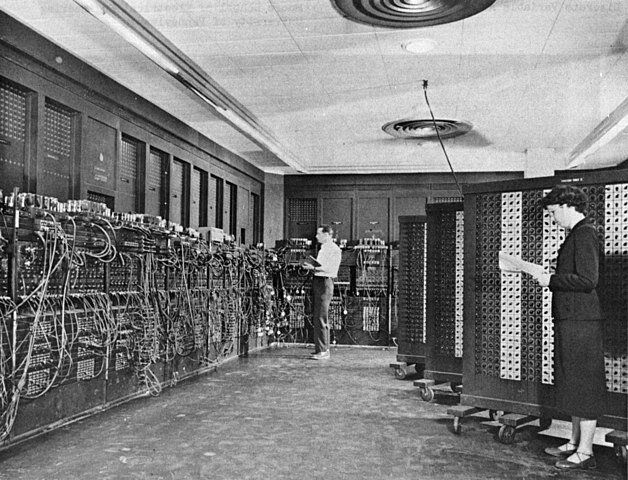
Anyway, you have the Apple II and you begin to have the beginnings of software. Apple’s success hinged on Steve Wozniak, in a room just full of computer parts loading the compiler every single day. To start the day, he had to reload the compiler. There was no easy entry of data and you couldn't boot up software. I have called him the Mozart of the computer revolution because he talked to the computer, speaking in assembly code. I would walk in and I see this guy having a conversation, and it looked like they were actually interacting back and forth. That's about as deep in as I've ever seen anybody get with technology. He could have climbed through that monitor, and it wouldn't have been a surprise to me at that moment.
In 1979, Steve Jobs was running two operations: Lisa and Macintosh. Well, Lisa failed, it was just an ungainly machine, so Steve jumped over to Macintosh and took it over. The Macintosh team had seen what Xerox was doing with their personal computer, research they weren't going to do anything with. Xerox Parc had a genius in Doug Englebart, who designed the mouse, bit-mapping, windows, and everything else, and had already left by 1984. The Macintosh team literally set up a scam visit to Xerox, believing Steve would only look at these innovations if he thought he discovered them. The Mac team arranged a walk through at Xerox, with a whole setup already prepared. Steve goes, "Huh?" And they went, "Wow, Steve, I think you've seen something here, let's take a look at it." Steve goes, “Oh, I like that Windows thing, and I like the mouse, can we do that?" And they said, "I don't know Steve, maybe we can try."
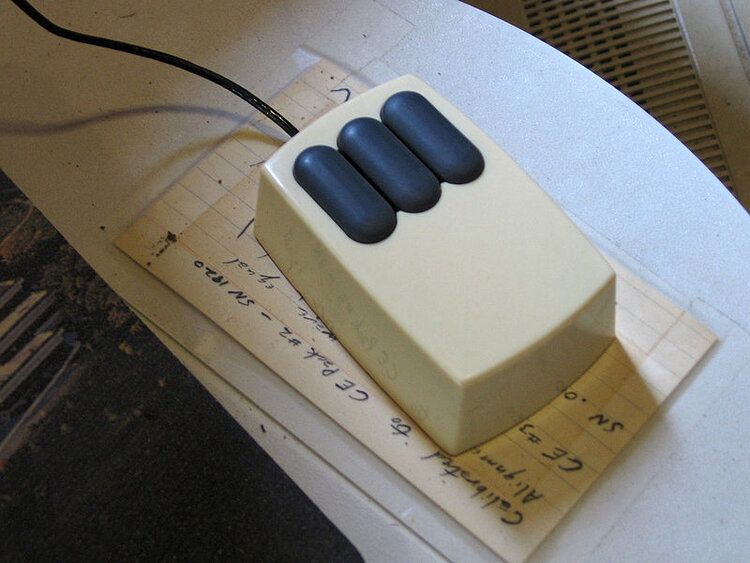
He'd been set up to feel like he had stolen it, and then that appealed to him. He set a date of about three months for his team to develop the work. And of course, they had already secretly developed it, so they all went to lunch for the next three months. Then on the deadline, they showed up with an essentially complete Macintosh. What's crucial about the Macintosh is its user interface, its hardware user interface, and its operating system interface. That's the world we all live in now on our phones, on our laptops, on our TVs, on the dashboards of our car. The idea that you're moving a cursor around, that you can choose your font, and the color... And the idea we can window out things - all of that derives from that moment when Steve introduced the Macintosh, based upon what the Mac team had set him up to find.
These are such people-hungry interfaces, and suddenly the vision of computing shifts. What you can do became more important than the actual box. There were millions of Macalites that loved every Apple product because it made them feel distinct and creative and rebellious. It is interesting that one feels rebellious, buying stuff from a trillion dollar company, but nevertheless, it was that way. Apple has done a masterful job of maintaining that. The bottom line is, we look at our computers now, or our phones, and what we really think of is, "Now I can run movies, now I can download a two-hour film in 30 seconds, and now I can work more creativity on it, I can produce music."
Ultimately, 1984 was the turning point between hardware and software, although the Valley didn’t really show it until about 1990. At the end of the '90s, and the beginning of the 2000s, we see the rise of Netscape, and the rise of Google. Up until then, it's still an ecosystem of wafer fab and manufacturing lines. Firms started moving the big manufacturing into other states where labor was cheaper or overseas. The scalability of software made it ascendant, not just from a consumer point of view, but also because venture capitalists looked at it and said, “This is the most scalable entity ever created, and it's cheap. We just hire a bunch of code heads, and they have a great idea. They can develop this thing instead of spending $10 billion for a chip fab or $5 million for a manufacturing line. We could have these guys write code, they never even have a physical product.”
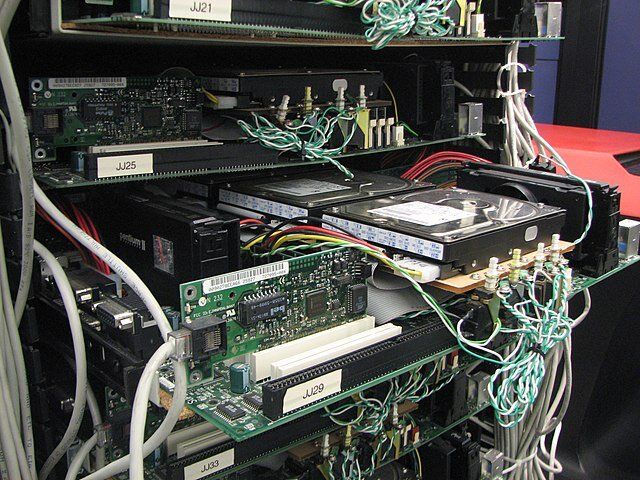
Suddenly in 1998, you get a software proliferation, the dot com boom. VCs are just handing out checks, they're giving people more money than they're asking for, which has never happened. Then it collapsed, as it always does. Silicon Valley has always been a sine wave, every four years you have a boom and then you have a bust. No one thought the dot com would bust; but it busted. But the companies that survived, we still use them. And they are huge, like Amazon, like eBay.
Now, it's starting to turn again. It begins with Tesla, Elon's a hardware guy when you get right down to it. He doesn't think like a traditional hardware guy, but he does think in terms of manufacturing lines and all that. Tesla is basically a body and a chassis wrapped around a personal computer. However, you still have to build the chassis, you still have to shape that body and manufacture it. Even silicon has come back to Silicon Valley, with silicon-based battery production. We're seeing a return to hardware - hardware with the soul of the software era. What's Bezos doing? Building rockets. And what do we have in autonomous vehicles? It's software integrated into a physical object that has to be manufactured. The world is becoming a hybrid between virtual, analog, and physical. We're still human beings. We've reached kind of the limit of how far are we going to live in cyberspace without losing our humanity.
Why Silicon Valley has been so successful? There are several reasons. One of them is the Valley goes back longer than people think, like I said, 1900. You had cheap land because it was all orchards. You had a bunch of returning GIs who shipped out for the Pacific from San Francisco and thought, "I am going to die on some remote island, but if I live, I'm going to settle down here. I can bring all the technology stuff I learned in the military during the war to the aerospace industry.”
Then you had key figures, like the Lockheed brothers. You have a great teacher in Fred Terman at Stanford. His students, including Hewlett, Packard, Varian, liked him much they wanted to stick around after graduation. Eventually, he gets Stanford to build them Stanford Industrial Park which is the heart of Silicon Valley. The original heart.
Shockley grew up in Palo Alto, goes off to New York to Bell Labs where everyone hates him. He decides, "I'm coming home, I'm gonna start my own transistor company." He comes to Palo Alto and wins the Nobel Prize for Physics. He puts out the word, "I'm hiring the best and brightest", and puts together a brilliant team. They also hate him, and they all quit. They start Fairchild. Fairchild blows up, and alumni create 150 chip companies. All of a sudden the entire infrastructure is here. And it takes off. It’s a chain reaction. And that's the infrastructure that creates all of this.
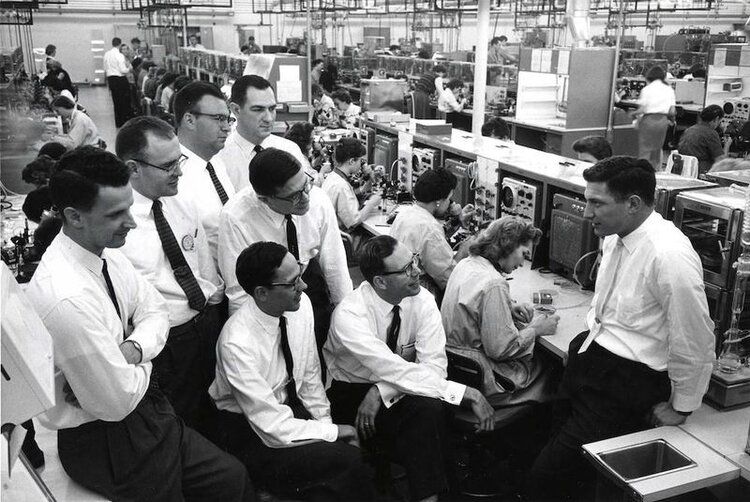
And the final piece of infrastructure is not as obvious. Go into any Starbucks, any restaurant in this town, everybody around you is talking technology. Everybody here believes that they're going to either invent something or they're going to be part of a start-up. You go to a movie theater, the ads before the movie are all for hiring programmers. You go to the 49ers games, all the signs are about technology companies. We are marinated in technology here, there's no escaping it. You think about it 24 hours a day, and that's the last crucial piece of the recipe for building the infrastructure of the world's dominant technology community.
Thanks to Michael Malone and to James, Jason, Corey, Aaron, and Victoria for joining the conversation. Starting this week, we’ll be reading The New Breed: What our History with Animals Reveals About our Future with Robots, by Kate Darling. Join as a Member today to join us when we chat with Kate in November.
When first published, the Mac’s memory, the location of Eniac, and the date of Jobs’ visit to PARC were misstated and have been corrected.


